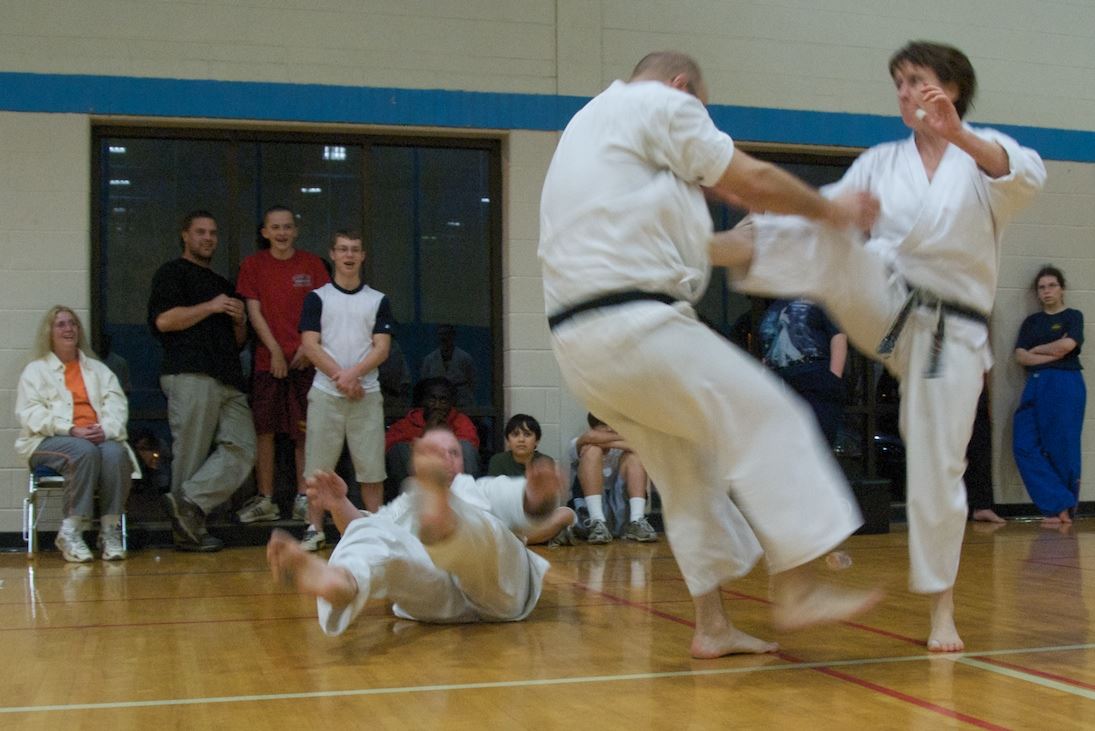|

The Philosophy Behind Our Practice
Mission Statement
We seek tranquility in the midst of conflict or danger and strive to control our bodies, minds and emotions to be able to avoid conflict when possible, defend ourselves when necessary, and protect others when able.
Motto
Discipline, Integrity, Respect
Two Governing Principles
- If you don't get touched, you don't get hurt.
- If you hit someone, make sure they go down.
Three-Part Framework
- Kata
- Kihon (ten-no kata)
- Kumite
KATA: Set routines combining basic techniques. For AKDS practitioners, kata is important for more than just simulating combat situations (or bunkai) or just to improve focus. AKDS uses kata in unique ways to develop muscle chaining ability that is vital in real self-defense situations.
KIHON: In Kihon (basics), techniques taken from kata are practiced in slow, controlled, repetitive situations with a partner in an atmosphere free of anxiety or tension. Part of this practice is known as Ten-no Kata, wherein partnerships practice full speed attack and defense exercises one at a time while striving to maintain proper body condition while utilizing muscle chains.
KUMITE: This practice can move from one-step attacks (ju-ippon kumite) where a single attack is agreed upon, to free sparring (kumite), where partners test their fighting skills without mats, pads, or referees.
The following document, which comes from the American Karate-Do Shotokai Constitution (Appendix 1), lays out some key statements that outline our philosophical foundations and is crucial for every karateka to be familiar with in order to truly understand what we do both on the "martial" side, as well as on the "art" side.
AKDS Philosophy
